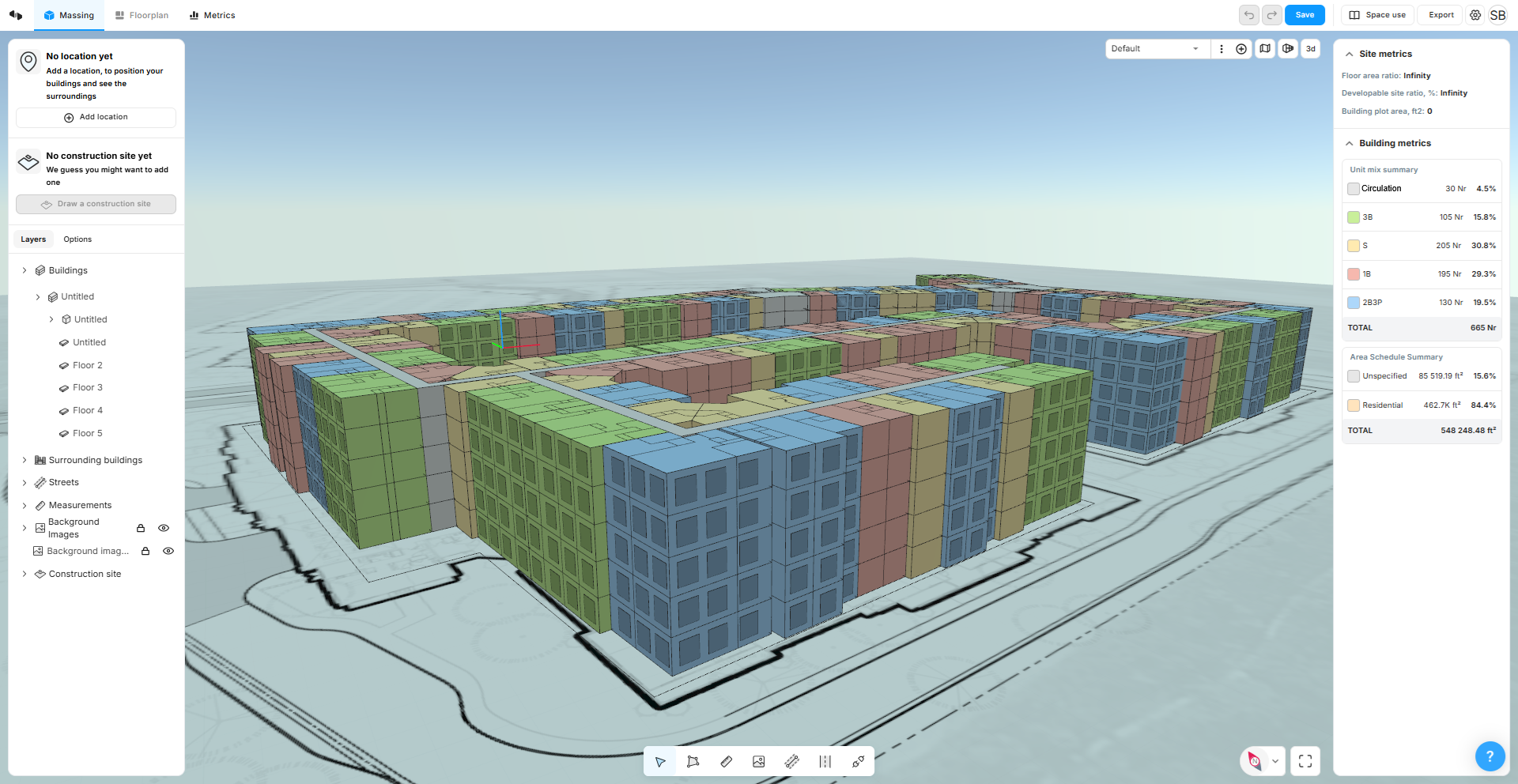How a Leading Architecture Firm Used Skema to Strengthen Early Design Decisions
A leading architecture firm piloted Skema to understand how data-driven iteration and automation could streamline early-stage design and elevate the consistency and quality of early outputs. Using Skema the firm’s Technology Task Force rapidly generated multiple design scenarios and master plans, centralized unit-plan data, and cut time spent on repetitive manual work. The pilot proved successful — the firm validated Skema’s value, extended use across workflows, and moved Skema into production beyond the initial trial.
Reliable unit plan iterations in a fraction of the time using the firm’s own Skema Design Catalogs
The Challenge: Early Design is Slow and Imprecise
Early-stage residential design work often means starting from scratch—drawing unit plans in 2D, updating layouts by hand, and recalculating numbers with every change.
The Tech Task Force identified three recurring pain points:
Fast, massing-specific unit iteration — Generating many unit plan options that respond to a building’s massing is repetitive and error-prone
Rough master-planning at scale — Laying out multiple master plan scenarios quickly, and pulling coherent metrics from them, usually takes too long
Preliminary client numbers — Producing reliable early stage area/quantity estimates for several design scenarios is labor intensive and often inconsistent
When the firm set out to explore tools for schematic design (SD) and early design phases, their brief was straightforward:
Make iterations faster, reduce manual cleanup, and surface trustworthy numbers earlier in the process
Why Skema: a data-first approach to early design
The team piloted Skema to see whether a catalog + automation approach could replace fragile 2D layouts and ad-hoc file hunting with repeatable, data-rich design building blocks.
Key aspects the firm tested:
Centralized design catalogs of typical unit plans and assemblies that can be reused across projects and scenarios
Parametric iteration driven by massing and program rules to create many viable options quickly
Early BIM-rich outputs that carry useful data forward into later phases, reducing rework when transitioning to design development (DD) and BIM
What the pilot showed — concrete outcomes
Consistency & clarity.
Centralized catalogs eliminated ambiguity about which unit layouts were “standard” for the team.
Faster option generation.
Iterations based on cataloged, data-rich assemblies required far less manual cleanup and produced clean deliverables faster.
Better client conversations.
With more accurate early outputs, client meetings focused on choices and tradeoffs rather than chasing numbers.
Reduced master-planning time.
Rough master layouts and scenario comparisons were produced more quickly, integrated with coherent data.
Smoother SD→DD handoff.
Skema filled the gap between schematic 2D work and Revit-based DD by producing data that could be trusted and reused.
A superior fit.
The Task Force found Skema more aligned to their workflow and more advanced in its outcomes than other AI-driven tools they evaluated.
Voices from the pilot
Following the pilot, the firm chose to continue with Skema and integrate it into their ongoing workflows.
Design leaders' takeaway
For firms that want to move away from fragile 2D-first workflows and toward a repeatable, data-driven early design practice, Skema acts as the connective tissue: a catalog of trusted design elements, an engine for rapid iteration, and a bridge into BIM deliverables.



